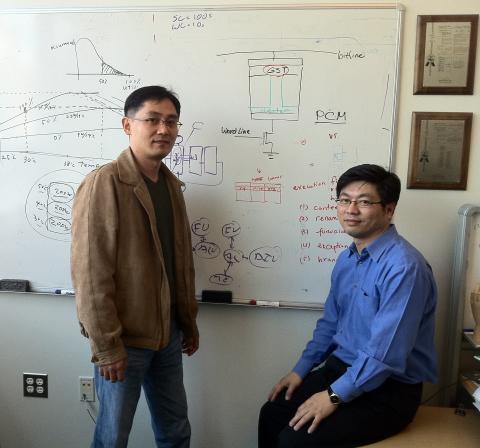A paper written by Hsien-Hsin Sean Lee and his research team is the first ever from Georgia Tech to be chosen for IEEE Micro magazine's "Top Picks" issue. Published annually, this issue selects the most significant papers from computer architecture conferences based on novelty and long-term impact.
A paper written by Hsien-Hsin Sean Lee and his research team is the first ever from Georgia Tech to be chosen for IEEE Micro magazine's "Top Picks" issue. Published annually, this issue selects the most significant papers from computer architecture conferences based on novelty and long-term impact.
Being chosen for this honor is considered the equivalent to receiving a Best Paper Award. This year, IEEE Micro chose 11 papers to highlight.
An associate professor in the School of Electrical and Computer Engineering (ECE) at Georgia Tech, Dr. Lee co-wrote this paper entitled "Security Refresh: Protecting Phase-Change Memory against Malicious Wear Out" with his current Ph.D. student Nak Hee Seong and his former Ph.D. student Dong Hyuk Woo. This work addressed the technological limitation of an emerging memory technology known as Phase Change Memory (PCM).
PCM provides benefits such as non-volatility, low-power, high-density with access speed comparable to DRAM, yet more scalable in feature size. Industries have been investigating PCM as a candidate to replace DRAM, but PCM's usability is hindered by its limited write endurance. Dr. Lee and his team proposed a novel, wear-leveling technique called security refresh, which randomly shuffles the physical location of each memory block to slow down wear-out caused by frequent writes to the same locations. The scheme evens out the write distribution in the PCM space and obfuscates address access patterns to prevent worst-case writes or malicious exploits. Security refresh can effectively extend PCM's lifetime to approach its theoretical limit, enabling its practical use as an integral part of the system memory for future computing systems.
